
views
Recognizing the Financial Costs
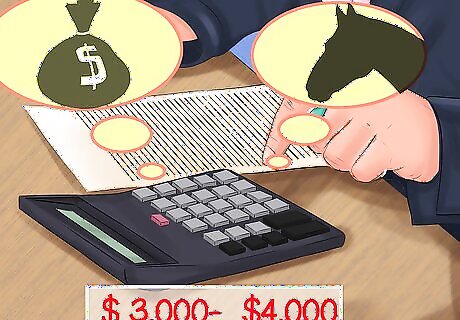
Calculate the cost of the horse. Before you jump right into horse ownership, you should consider if you can afford to own and care for the horse. Owning a horse is like taking care of a small child, and the costs associated with it can be very high. If you are looking to get a starter horse to help you get better at riding, you may end up spending $5,000 USD or less. If you would like a more mature horse and have aspirations to be a professional rider, the horse may cost much more. You should look up the costs of horses at stables in your area. You may be able to get a horse for $3,000-$4,000, depending on the horses available. You may also be able to work out payment in monthly installments, where you would pay anywhere from $200-$400 a month for the ownership of the horse. If you already ride at a stable and have a horse trainer, you should discuss your options with your trainer. Ask your trainer how much a specific horse will cost you. Your trainer may also be able to recommend that you get a starter horse, or a horse that is more mature, depending on your riding level. A free horse is never free. Don’t get tricked into this sales pitch.
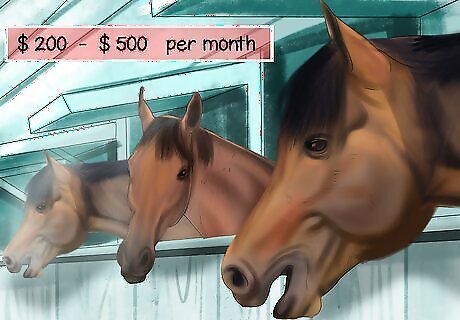
Note the cost of boarding the horse. Once you own your horse, you will need to factor in where you are going to board your horse and how much boarding will cost. You will pay a stable or a boarding facility to board your horse. The rates can range depending on the market in your area and if you opt for full care, where the facility feeds and cleans the stall for you, or self-care, where you do all the feeding and cleaning yourself. Boarding a horse at a facility with full care can cost around $200-$500 a month, depending on the market in your area. But if you opt for self care at a boarding facility, you may end up paying only $100 a month. Make sure you look at boarding facilities that are no more than 30 minutes away from your home, if possible. This will make it easier for you to get to and from the facility on a daily basis. You should then ask the facility questions, such as "What is your full care option like and how much does it cost?" and "How much would self care cost at your facility?" You should also ask the boarding facilities what their pastures are like and how long the horses get turned out for and when (night or day). Look at the stall size and consider how much stall you are paying for. Some stalls you can get are indoor/outdoor, meaning the horse can walk outside when he chooses or can be shut into his stall. If you have land, such as on a farm or a large lot where you can keep the horse, as well as a barn or stable, your boarding costs may be much lower. However, this means that you will have to do much of the care and feeding of the horse yourself.
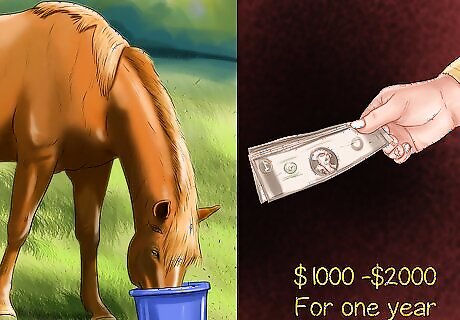
Budget for feed and supplies. You should also plan for the cost of food for your horse, as a huge portion of your budget will go to food. Your horse will need to eat about 1.5% to 2.5% of its body weight each day in hay and grain. Though hay and grain are not very expensive, you will need quite a bit of it to keep your horse well-fed. You should budget about $1,000 to $2,000 a year for the horse’s feed. You will need to also consider the cost of bedding for your horse. If you opt for full care at a boarding facility, bedding may be covered. If you do self care, you may need to provide hay for bedding for your horse, which will be an added monthly expense. You should also consider the cost of supplements for your horse, as your horse may need to take certain supplements to stay healthy. Your veterinarian will recommend supplements for your horse, which can be expensive depending on the type of supplements your horse requires.
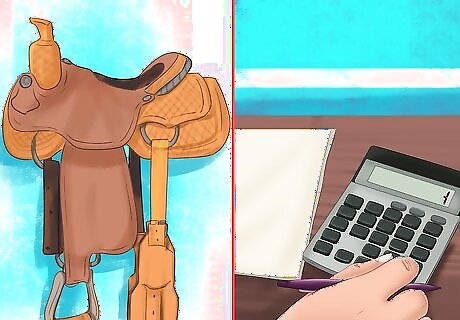
Calculate the cost of riding equipment for the horse. When you purchase your own horse, you will need to invest in riding equipment like a saddle, a bridle, and grooming supplies. You will also need to pay for ongoing expenses like fly spray, grooming supplies, and horse blankets. If you currently have a horse trainer or instructor, you should discuss the costs of this equipment and supplies. You should opt for equipment that is high quality and long-lasting, as this will cut down on your expenses later. Look into options at resale shops or online. You may be able to find gently used tack for much cheaper than buying it new. You can also wait for sales from online companies to stock up on tack at a discounted price.
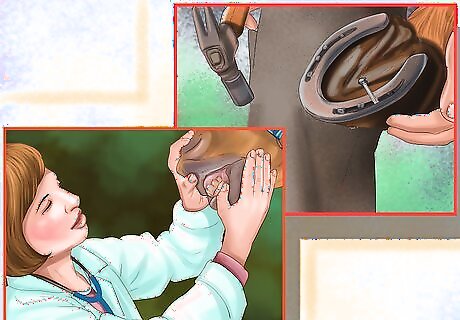
Note the cost of farrier and vet care. You should also factor in the care and maintenance of the horse, including the cost of farrier or hoof care. Your horse’s hooves should be trimmed and shod every four to six weeks. This can range from $350 to $1,500 for the farrier, depending on their skill level, the frequency of their visits, and how long it takes them to shoe your horse. This is in addition to the cost of applying shoes, replacing any damaged shoes, and purchasing special shoes to help with health problems. You should consider the cost of vet care for your horse. This includes the cost of check-ups, vaccinations, tests, deworming, and care for minor injuries. Vet care can average at least $1,000 per year, depending on the needs of your horse. You should also factor in the cost of emergency care for your horse in the event of an emergency or major injury. The cost of this care could be high, depending on the nature of the injury. You should also consider whether you want to invest in insurance for your horse. There are a number of companies that provide health insurance at a monthly fee, like human health insurance, that can help provide protection for some of these emergency situations and preventative care costs.
Committing to the Care and Maintenance of the Horse
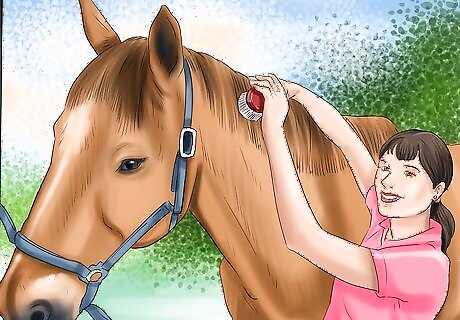
Set aside two hours a day for care and maintenance. If you are opting for self care of the horse at a boarding facility or on a home lot, you will need to set aside at least two hours a day, every day, for care and maintenance. You must be willing to commit to daily care, as you cannot simply take a vacation or skip a day when you feel lazy. Your horse will be depending on you for daily water and food as well as attention and care. You should consider your current schedule and determine if you have the time to spend two hours a day at least with your horse. This means you may need to wake up several hours early in the morning to care for the horse or spend time after school or work caring for the horse. A horse is a pet that you need to go and spend time with in it’s home, unlike a dog that you spend time with without leaving your home. This will drastically change your daily schedule.
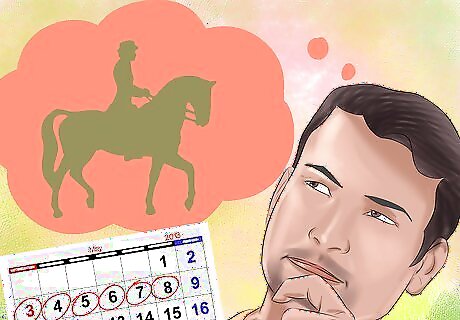
Determine your riding schedule. You should also consider how often you plan to ride the horse and what your goals are as a rider. Are you an avid rider with enough time to ride the horse six days a week? Or are you a more recreational rider, with only enough time to ride the horse twice a week? At a minimum, you should try to ride your horse two to three times a week. You should make sure you have enough time to commit to a riding schedule where your horse gets enough exercise and personal attention. You cannot simply skip out on riding your horse for months at a time, as your horse will only do well and stay healthy if you give her love and attention. You will need to have enough time to ride her and bond with her as her owner on a consistent basis. You could pay someone at the barn/boarding facility to come ride your horse on the days you cannot or when you’re out of town. However, this is yet another cost you need to factor into your overall budget.
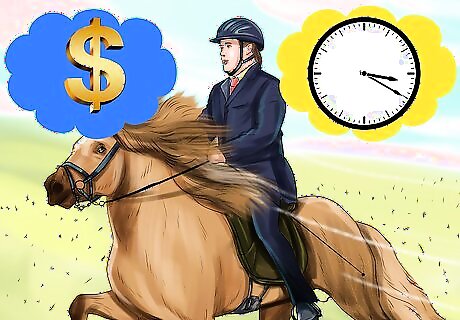
Commit to training the horse. You should also consider the time you will need to commit to training the horse. Even if you buy a horse who has been broken and is ready to ride, you will need to commit time and money to doing basic training with the horse. You may hire a trainer to work with you and your horse so you have a set training plan in place. You may want to talk to a horse trainer and determine the time required to train a particular horse breed or a horse type, like a starter horse. You may ask, "What kind of time would I need to devote to training my horse?" and "How many times a week should I train my horse?" Make sure you factor in training time with riding time as well as time for care and maintenance. Taken all together, you may be looking at quite a bit of time spent at the stable with your horse every day. Different levels of trainers come at different price points. Depending what your goals are as a horse owner, the trainer fees can get very steep very quickly.
Identifying the Long-Term Responsibilities of Owning a Horse
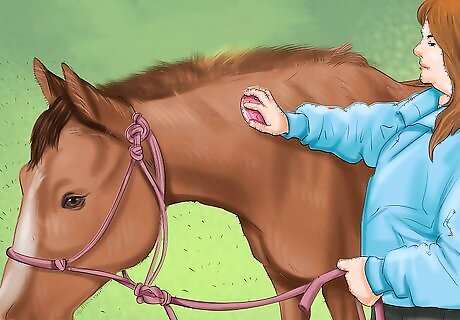
Treat your horse like a long-term partner. Horses can live up to 20 to 30 years, and they should be treated like long-term responsibilities. You should be prepared to commit years of care and attention to your horse, much like you would a long-term partner. This means you will need to show up and work hard to provide for your horse and keep her happy and healthy. The financial commitments as well as the time commitments means you should not enter into the purchase of a horse lightly. You will need to learn to balance the responsibilities of owning a horse with your other life responsibilities, such as your schooling, your personal relationships, and your career.
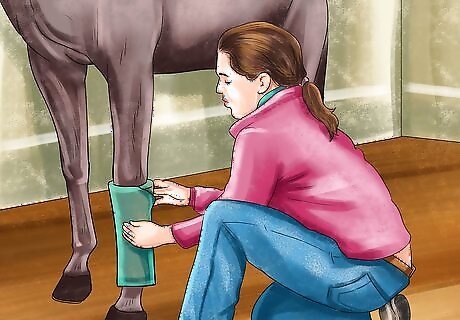
Be prepared if the horse is injured or becomes lame. You should be prepared for other long-term responsibilities of owning a horse, such as caring for the horse if she gets badly injured or becomes lame. Sometimes horses get injured and can no longer jump or trot like they used to. The horse may also develop a health issue that leads to lameness. As the horse’s owner, if it then your responsibility to decide how to best support your horse and your needs as a rider. Though you can sell or trade your horse in, you should also consider other options as an owner. If your horse becomes ill, injured, or lame, you should discuss your options with your horse’s trainers and your veterinarian, and try to find a solution where the horse is cared for and you are still able to pursue your riding goals. If you find yourself in a situation where you need to give your horse up, discuss this with your veterinarian as they will know of retirement facilities, special needs barns, and people who are equipped to help out pasture pets. They will best be able to point you in the right direction and help you find the best solution for your lame horse.
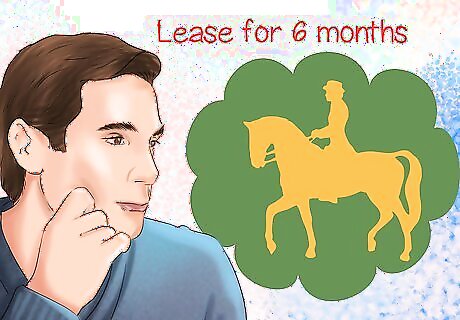
Consider leasing a horse before you buy one. If you are still not sure if you are ready for the long-term responsibilities of horse ownership, you may decide to try leasing a horse first. You may do a full or partial lease for six months, where you pay a fixed fee for riding time on a horse. You may start with a lease so you can get a better sense of the time and financial costs of having a horse. If you feel you need more “horse time,” you may be ready to move forward with owning a horse. Leasing a horse for a period of time can help you realize if you are prepared for horse ownership. Leasing a horse is also a great way to divide the responsibilities of horse ownership with another person. That way the horse gets double the love and you get a horse to ride.











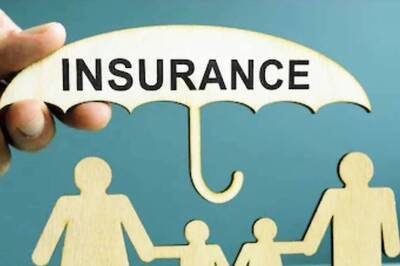
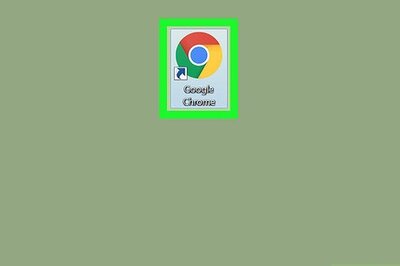







Comments
0 comment